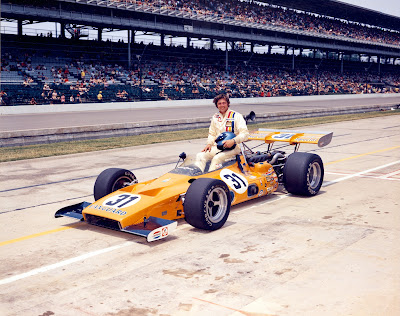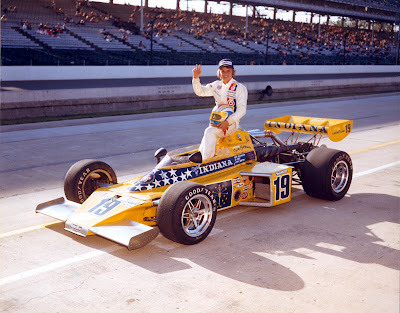Welcome to our monthlong countdown celebrating notable drivers and cars from the history of the Indianapolis 500!
 |
Photo Credit: Indianapolis Motor Speedway photo John Mahler started 29th and finished 22nd in the 1972 Indianapolis 500. |
30 Days in May Bonus: No. 31, John Mahler, 1972 Harbor Fuel Oil McLaren/Offy. We wrap up with John Mahler, who was one of eight rookies in the starting lineup for the 1972 Indianapolis 500. He qualified for the 1971 race but was “bumped” by his car owner, Dick Simon.
Mahler had qualified Simon’s back-up car in 1971, becoming the fastest rookie in 500 history in the process. But then Simon was bumped, so he took over Mahler’s ride for the race.
So began what was to be an interesting, colorful Indianapolis 500 career for Mahler, who made four starts from 1972 through 1979. In 1973, he was part of the Champ Carr Enterprises team with Sam Posey. Mahler likely would have made the race had he been allowed to complete either of his two qualifying attempts, both of which were tracking toward an average fast enough to make the field.
Jim McElreath took over Mahler’s car and hustled it into the field, bumping Tom Bigelow late on the final day of qualifying. Posey then was bumped by George Snider.
Mahler’s best finish was in 1977, when he was credited with 14th after getting some relief help from Larry “Boom Boom” Cannon. He almost squeezed into the 1983 lineup, accepting a speed that was some 27 mph off the pole speed with the hope that rain would curtail qualifying. The gamble almost paid off, but Mahler was knocked out by Dennis Firestone, who completed his run as showers hit.
In 1972, Mahler wound up 22nd, sidelined by piston failure after 99 laps. A highlight film produced by Channel 6 in Indianapolis indicates that Mahler had to pull in before the green flag because he forgot his gloves.
#Indy500 @IMS @IMSMuseum @IndyCar































